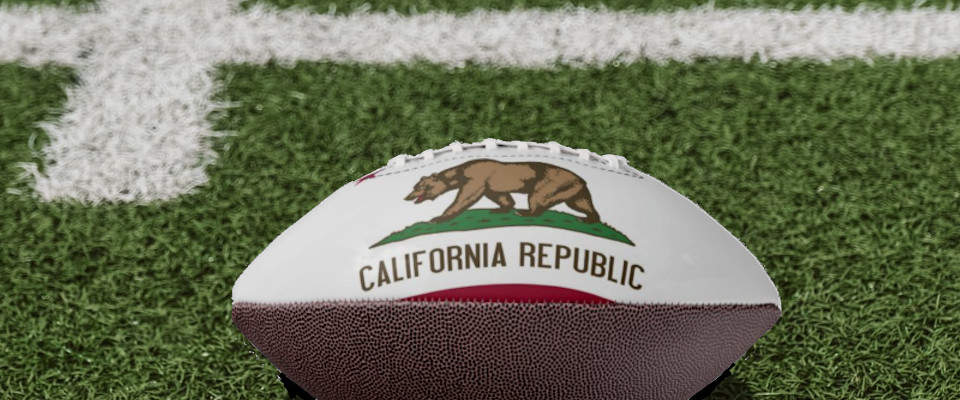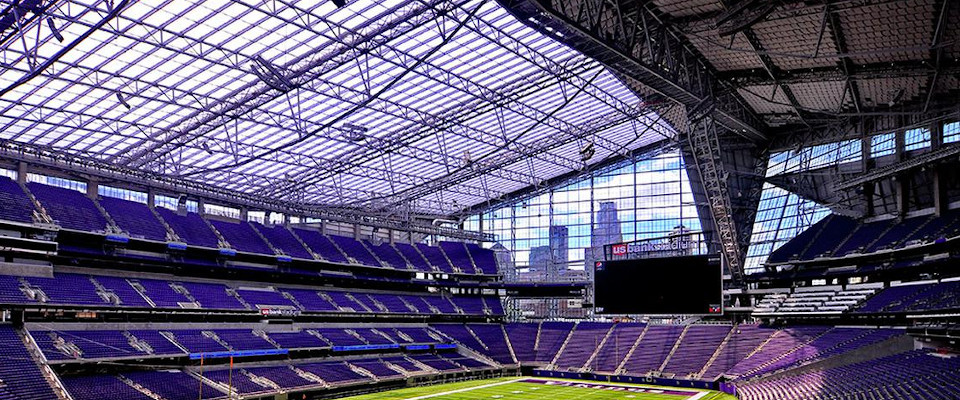In 2021, the public finally got to see an NFL game in L.A’s $5 billion SoFi Stadium. Raider fans were treated to the $1.9 billion Allegiant Stadium. Both were significant upgrades to their old homes and both land in the top 6 in terms of current NFL venues.
But the old ones all had memorable qualities. And I’d hate for my experiences there to be relegated to the dustbin of history. So in order, from worst to “best”, here are my original reviews for Cali’s three most recently retired NFL stadia.
OAKLAND COLISEUM

Former Ranking: 30/31
Location: Oakland, CA
Opened: 1966; Retired: 2019
Capacity: 56,057
3rd best weather of 23 outdoor venues
Games attended: 1 football (almost 20 baseball)
Last visited: 2019
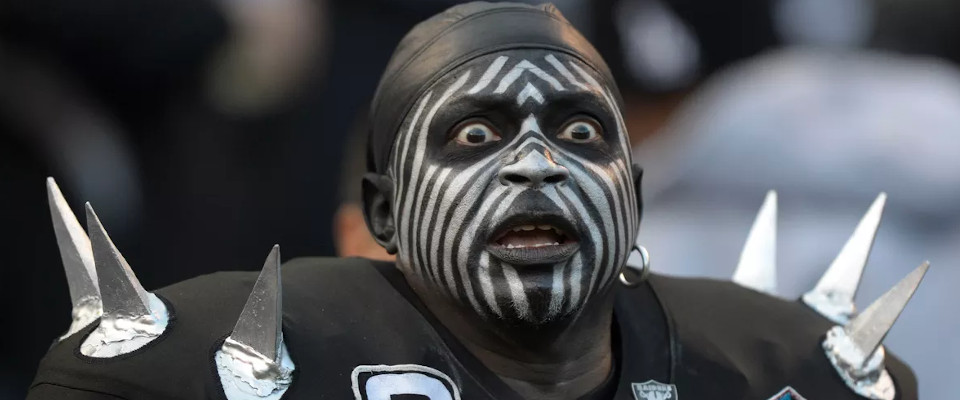
REVIEW (FROM 2019)
I finally mustered up the courage to see a game in the Black Hole before the team moved to Vegas. This truly was (and likely still is) the scariest fan base in sports. It was like looking into a dystopian future: a drunken brigade of hairy, menacing, intimidating belligerents wearing skulls and spikes. And that’s just the women.
A shifty cast of characters greeted you on the walk from the BART with shopping cart bacon dogs and cold beer for sale. The tailgate scene in the Oakland Coliseum parking lot was aggressive. The stadium itself was a relatively charmless concrete multi-purpose circular bowl with incredibly cramped concessions, not nearly enough washrooms and a Soviet design ethos. To also accommodate baseball, sightlines were compromised and the infield dirt was in play. The only thing “nice” was the weather, which is normally so.
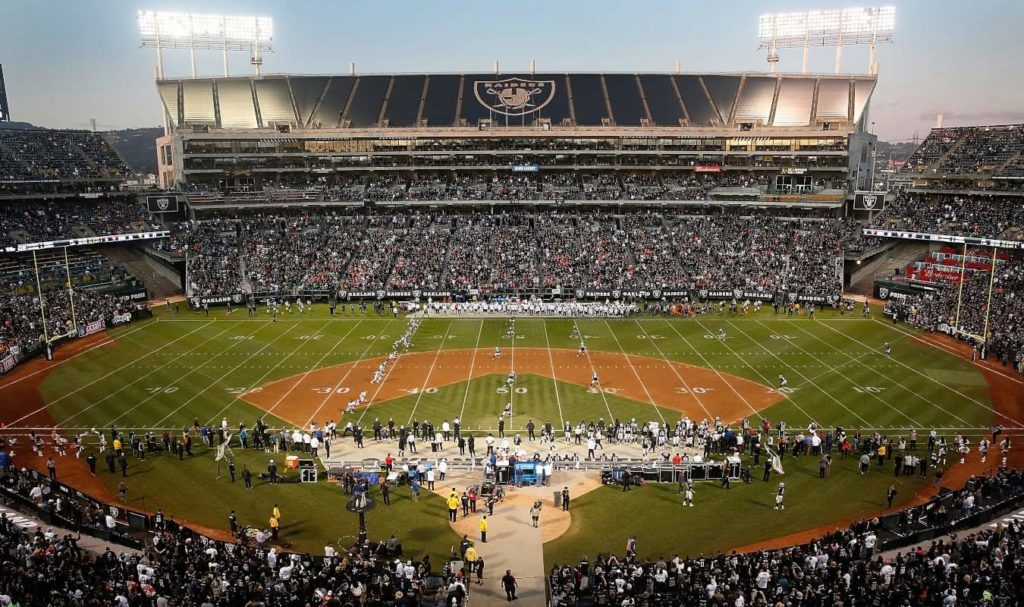
And yet in an age where everything is so pristine and polished, it was a thrilling change of pace. Like bungee jumping, Oakland Raider games were exhilarating experiences. The Vegas stadium will likely be nicer (it’d be hard to not be), but it can only hope to match the Mad Max vibe of a game here.
LOS ANGELES MEMORIAL COLISEUM

Former Ranking: 25/31
Location: Los Angeles, CA
Opened: 1923; Last renovated 2016
Retired for NFL Football: 2019
Capacity: 77,500
2nd best weather of 23 outdoor venues
Games attended: 1
Last visited: 2019
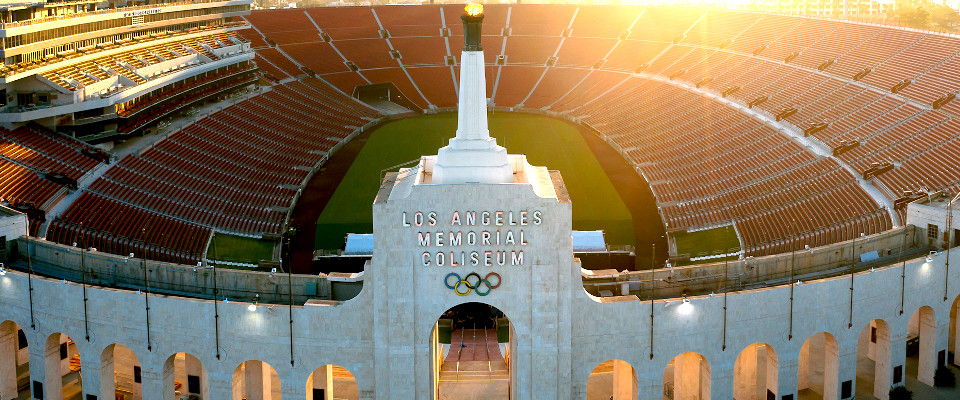
REVIEW (FROM 2019)
I came not expecting much. But there was a surprising sense of “cool” to the renovated Coliseum. I’m glad I made it here before So-Fi Stadium opens up.
This is the only stadium to host two Olympics. It was home to the first Super Bowl, a World Series and a papal mass. It finally underwent a fairly extensive renovation which included all new seats, more aisles, 650 video screens, more suites and reduced seating capacity. And they restored the peristyle, giving it a renewed sense of grandeur. While I can’t compare it to the old, the results felt solid.
You needed to walk through a low-ceiling vomitorium to reach the seating bowl, but you then felt a burst of energy seeing field for the first time. Many concessions were handled in food tents to help disperse crowds from the cramped concourses. And the beautiful weather that I enjoyed for my game is common.
The Rams crowd inside was more stereotypical SoCal chill with a little Hispanic flair. The stadium borders some gritty, working-class neighborhoods, but I never felt unsafe given Game Day crowds. Traffic in and out could be harsh, and parking was stupid expensive (like $100) if you sought something close to the field. I took the Metro (with a discretely concealed six pack for tailgating) and found it pleasantly easy (other than the fact that I was likely sitting in some homeless guy’s urine).
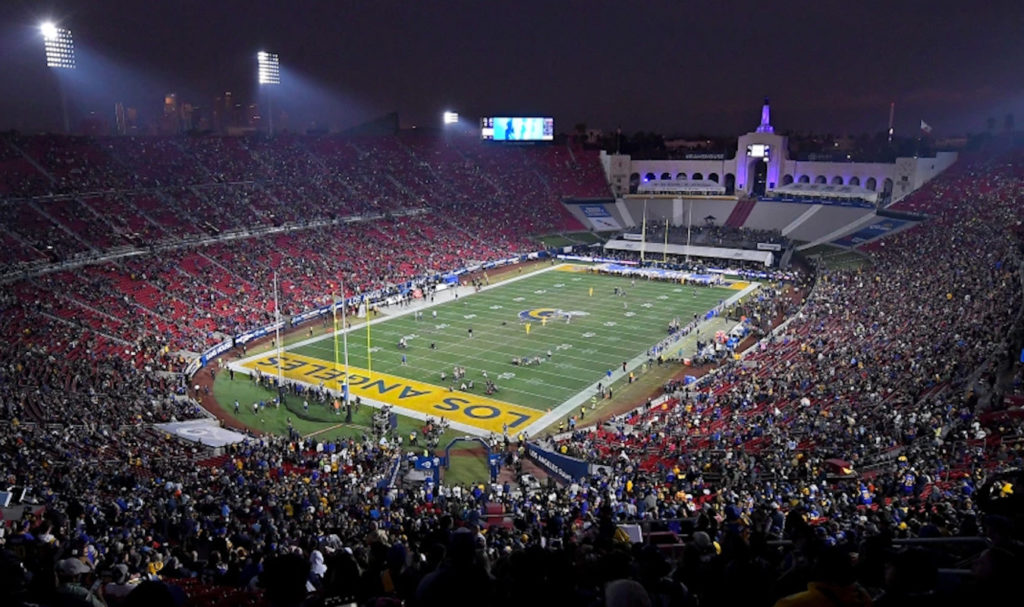
The impressive renovations should help keep this classic stadium in fine operation even once the Rams leave and cede it entirely to the USC Trojans. You won’t be able to see a pro game here anymore, but make it a college stadium bucket lister.
DIGNITY HEALTH SPORTS PARK

Former Ranking: 18 out of 31
Location: Carson, CA
Opened 2003; Retired for NFL football 2019
Capacity: 30,000
The best weather of the 23 outdoor venues
Games attended: 1
Last visited: 2019
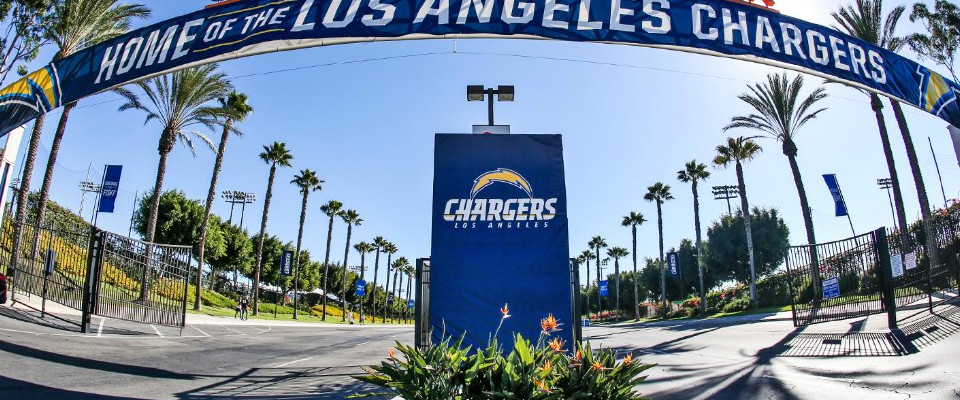
REVIEW (FROM 2019)
This was a pleasant surprise. I expected this to feel much weirder than it was; instead it kind of made me wish all NFL stadiums were this tiny.
The Chargers regrettably left San Diego after not being able to get the public funding needed for a new stadium. Instead they decided to become the 12th most popular team in LA (after the Lakers, Dodgers, Angels, Rams, Clippers, USC Trojans, Kings, Ducks, LA Galaxy, UCLA Bruins, and LAFC). Los Angeles greeted them with all the enthusiasm of one awaiting a proctologist visit, and San Diego disowned them for leaving. As such, it’s a team without a fanbase.
Ownership tried to grow its LA cred by moving to a small soccer stadium until their new stadium is built. Alas, the Chargers struggled to sell out even this tiny venue, and the majority of fans cheered for the visiting team.
It was a cool place to watch a game. Like watching U2 play at a House of Blues, you got a big league product in an intimate space. But the cool came at a price. Tickets were well above average, good craft beers were $17, and parking was exorbitant.
On the flip side, you were virtually guaranteed to be sitting in glorious SoCal fall weather – the best in football. The park itself was quite nice: large shade canopies kept things ridiculously comfortable, the videoboards were solid, the seats themselves were nice, and the concourses were wide and filled with good choices. Lines for food, beer and washroom breaks always moved because crowds were half the size. Traffic in and (especially) out was a lot easier to deal with given the smaller crowd. And every seat was close. It felt like a modern NFL stadium but with only the lower bowl.
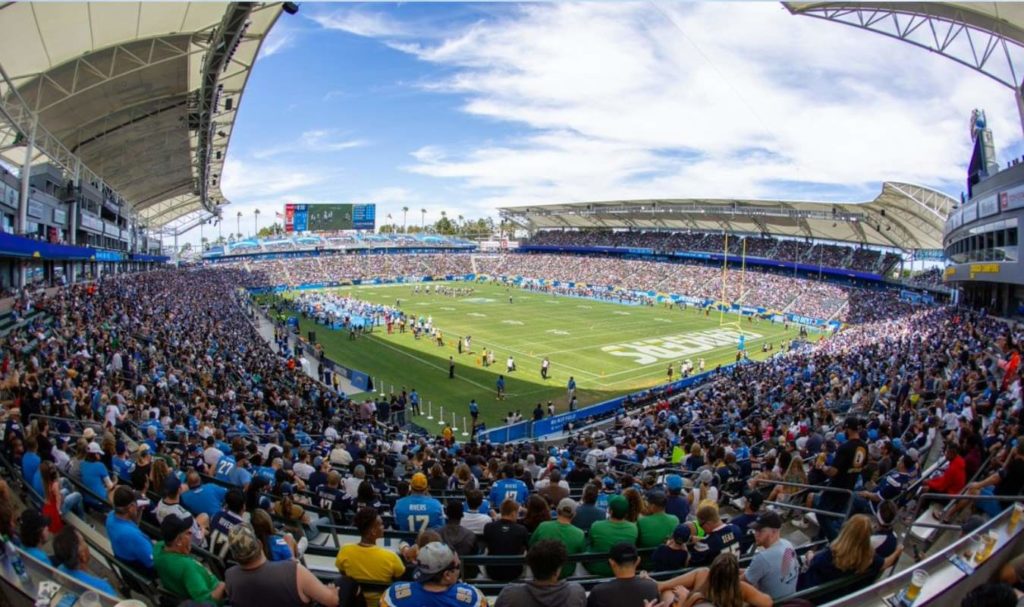
We may never experience something like this again. I’m glad I had a chance to do it.
As for their replacements
The sports purist in me wants to deride them as being shameless money grabs. The “Pragmatic Me” admonishes them for being over-the-top palaces that make little sense given how infrequently they would be used. But the sports fan in me says, “Hey, that’s not my $7 billion.” Both SoFi and Allegiant are freakin amazing pieces of architecture, solid places to watch a game, and land significantly higher on the list than these three mediocre now-defunct NFL buildings. Progress is good.

